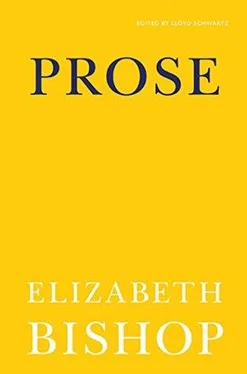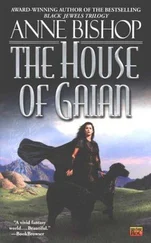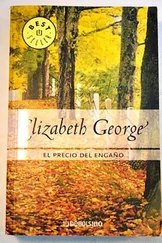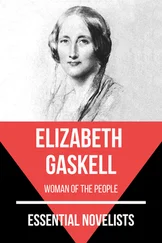Some of the church clocks by which Helena told the time have been removed. At about seven o’clock the light leaves the town rapidly and the surrounding sea of rocks, and the peak of Itambé, turn red. A few church-bells ring and then a great noise comes from the loud-speaker over the Cathedral door and reverberates all over town. Ave Maria, gratia plena; the town vibrates with it and the light bulbs on the high cross opposite snap into activity. It is the hour of the rosary, Helena’s terço, which caused her so much “suffering” at family prayers and which is now broadcast every evening during the month of May. On Sundays the same loud-speaker is used to draw people to mass; at five o’clock it was blaring out The Stars and Stripes Forever.
In spite of these innovations and the Betty Grable film showing at the one cinema, the town has changed very little since the youthful Helena lived there and raced up and down its steep streets. Most of the streets have no sidewalks, some have narrow ones, two feet or so wide, long slabs of greenish stone raised a little above the cobblestones, the pé de muleque, or “ragamuffin’s foot,”—that is, the confection we call peanut brittle, which it is supposed to resemble. Down the middle of the street runs another strip of long stones, set flush, much easier to walk on than the sidewalks that every so often stop altogether, or break up into steps. These footpaths are called capistranas, after a mayor of Ouro Prêto, who introduced them there.
The houses are thick-walled and solid, in the middle of the town of two or even three stories, but as one gets away from the Cathedral they become smaller and lower and the tile roofs turn to thatched ones. The taller houses have balconies, formerly often completely covered in by the lattice-work cages, called muxarabis (from the Arabian muxara, a shelter), showing the influence of the Moors on the architecture and way of life of Portugal. From them the women could watch what went on in the streets, in an Oriental seclusion. On either side of the windows giving onto these balconies are little lanterns, globes of colored or milk glass, luminárias. (The word has been extended to mean a kind of small cream-filled tart, highly thought of by our diarist.) The same kind of globe, without lights, decorates the railings, and sometimes Tecoma vines or grape-vines are trained along the ironwork.
The window frames are curved at the top, with double sashes of a dozen small panes each. Here the trimming becomes confusing, since some of the wooden frames are marbleized or painted to imitate stone, and some of the stone ones are painted to imitate grained wood. A good many of the windows still have stencils on the lower panes, a form of folk-art that also served to protect the privacy of rooms right on the street. A paper stencil in a formalized leaf-and-flower or other design is held against the glass and patted with a rag dipped in white paint. The effect is very decorative, like frost on the window panes in northern climates, only geometrical. The wide overhang of the eaves contributes to the town’s surprisingly Oriental air, and this overhang is filled in solid with molding and is a favorite place for colored stripes and other ornamentation. The houses are in admirably bold or pretty colors. I particularly liked a crushed-strawberry pink one, with a double staircase of blue, and window frames and under-eaves marbleized in the same blue. There are mustard-colored houses with bright yellow and dark green shutters, white with dark blue and peach, mauve with dark blue and yellow. So that passers-by will not be drenched in the rainy season, the mouths of the rain-pipes are carried out two feet or more, across the sidewalks, and the funnels flare like trumpets. It is as if a band had suddenly stopped playing. Sometimes they have tin petals or feathers down them and around the mouth, and this decoration is repeated in tiles set edgewise up the ridges of the roofs, dragon-like and very “Chinese.”
The grandmother’s house still stands, to the right of the Rosário Church, but the Teatro Isabel, formerly on the other side, has been torn down and in its place is a large baby-pink jail from whose barred windows a drunken prisoner yelled at me incomprehensibly. The house is low, its stoop just a few inches off the ground, a deceptively small-looking house with a sweeping, concave old tile roof. The woman who lives there now knew Minha Vida de Menina and its author and kindly showed me through. The old rooms for slaves, extending along the street by the church, are let out. Inside there is room after room, high, square, sadly neglected, almost devoid of furniture. The walls are a yard thick, wooden shutters can be closed and barred on the inside; the ceilings are of boards or woven rushes painted white, the two common Brazilian types. After a good many of these high dark rooms we reached the kitchen, where a girl was cooking over an open fire. Stoves here consist of a long iron plate with four pot-holes in it, laid on the edges of a stone trough full of embers. A wood called candeia is commonly used. It has a peculiar sweetish smell, sickening until one gets used to it; at the dinner-hour this sweetish stench hovers bluely over Brazilian towns and villages.
Behind the house the grandmother’s former garden covers about five acres, sloping down to a brook and a jungle of banana trees. There are huge jaboticaba trees, the same ones that Helena used to climb into for refuge. There are a few beds of lettuce and cabbages, and a grove of coffee trees, but everything is overgrown and gone to seed and it is hard to imagine how it must have looked in the old days, tended by the grandmother’s ex-slaves. A big sociable pig stood up on his hind legs in his pen, to watch us.
One of the handsomest buildings is Helena’s “Normal School,” now the Grupo Escolar, and located in the middle of the town; big, white, rectangular, with bright blue doors and window-frames. Juscelino Kubitschek, the present president of Brazil and a former governor of Minas, was born in Diamantina. He had visited recently and a great canvas banner bearing his smiling face almost concealed the front of the building. There are also a Kubitschek Street and a Kubitschek Place with his head in bronze in it, less than life-size, as if done by the Amazonian head-shrinkers.
The market is a large wooden shed, with blue and red arches, and a sparse forest of thin, gnawed hitching-posts around it. The drovers are still there, with loads of hides and corn, but because of trains, better roads, and trucks, trade has dwindled to next to nothing since Helena’s day. Near the Cathedral one is warned from the street or alley where the “bad girls” live. They are extremely juvenile mulattoes, sitting on their doorsteps with their feet stuck out on the cobblestones, gossiping and sucking sugar-cane in the sunshine. The live-forevers that Helena used to pick are still very much in evidence, in fact they are one of the town’s few industries besides diamond-mining. They are a tiny yellow-white straw flower, less than half an inch in diameter, on a long fine shiny brown stalk. Tied up in bunches, the bundle of stems bigger than two hands can hold, they lie drying in rows on the streets all around the Cathedral, and freight-cars full of flowers are sent off every year, on their way to Japan. They are used, I was told, for “fireworks,” or “ammunition,” but I suspect that, dyed and glued, they merely reappear in the backgrounds of Japanese trays, plaques, etc. Brazilian-made fireworks play an important role in Diamantina, as they do in all provincial Brazilian towns, and are used in staggering quantities for religious holidays. I was shown a warehouse packed to the ceiling with firecrackers, catherine-wheels and Roman candles; the supply looked much larger than that of food-stuffs on hand at the same wholesaler’s.
Читать дальше












